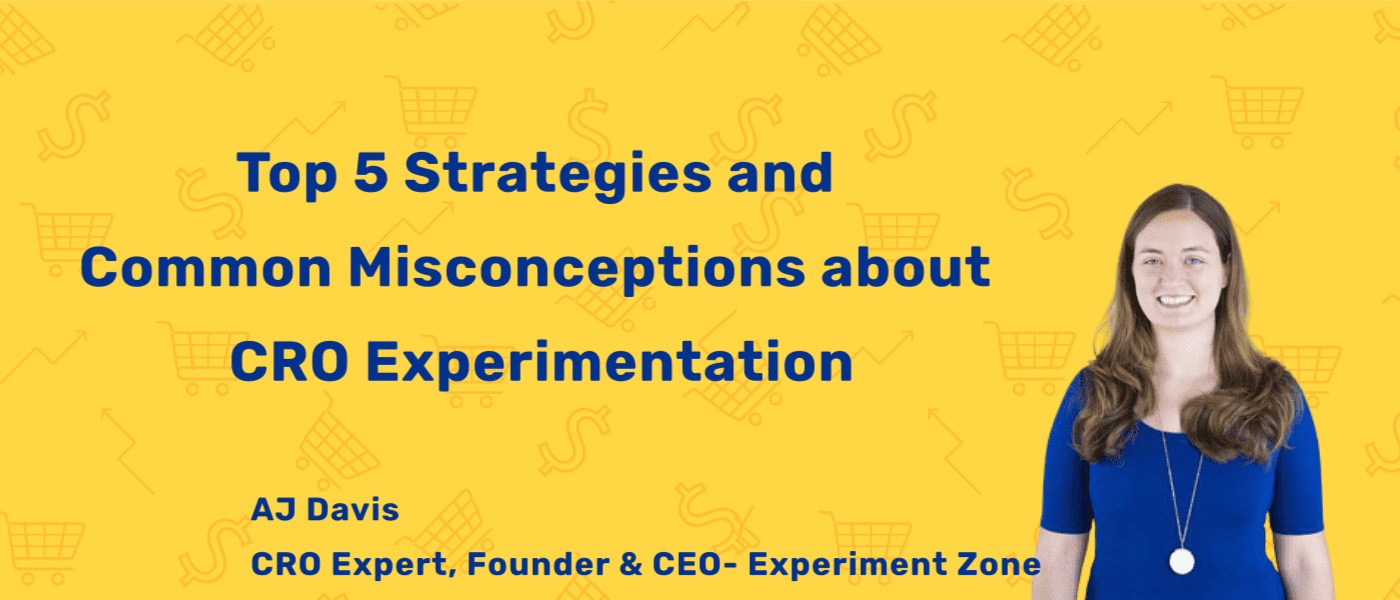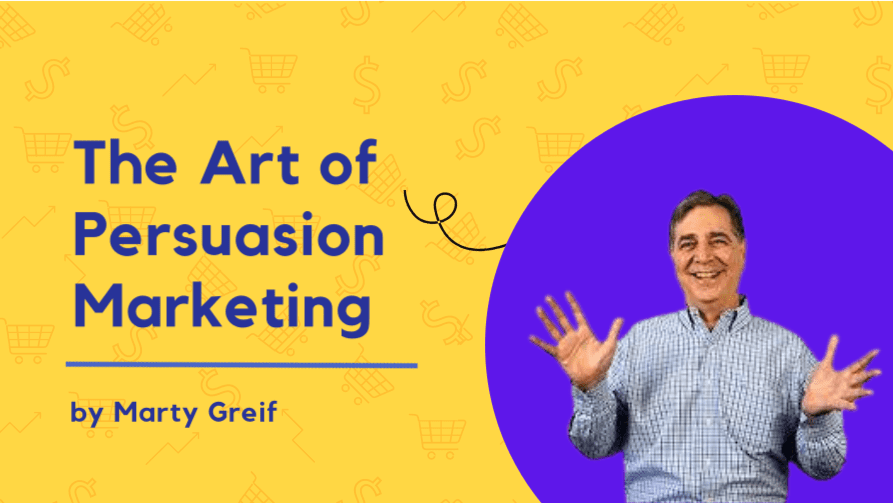[This is a transcript of Part 9 - Store Conversion on Steroids. Below is a link to the recording]
Introduction
Kausambi: All right. So this is already the day seven and it's so exciting. And Ruben and I, Andrea too, kind of like chatting, he's given a bunch of suggestions even before the event started. So thank you, Ruben so much. All of that. And for finally, uh, you know, being with me and our team and having this great conversation around trust-building, um, and, uh, you know, we've been speaking about persuasion, we've been speaking about, uh, you know, building more emotions into kind of like the shopping floor and a trust is an emotion.
It's a very, very strong emotion. I think it's the most primal emotion you can think of. Uh, and one of the primary reasons. That can actually make a break, uh, literally our online business, whatever it is e-comm or otherwise. Um, and without trust, where are we? Uh, you know, that's like the basic human instinct, I guess.
So, so I'm very excited to dive into all of that and. For us as businesses to actually build in trust across our store, across our touch points. But before all of that quick introduction over, over to you, Ruben, uh, what do you do and why is it very important for e-commerce?
Ruben: I thank you. Thank you for having me finally.
Um, so yeah, my name is Ruben. I'm a conversion manager at Online Dialogue, which is a CRO agency based in the Netherlands. So I worked for a variety of clients, some international ones, which you will know a Vodafone and eBay, for instance. And besides my work there, I also have my own company conversion ideas in which I, help people learn and Excel in conversion rate optimization and experimentation for an affordable price.
So for people who don't have the budgets to pay for the business to business courses. So every day I work with fun clients on websites and a great colleagues on optimization.
Why building trust is important in eCommerce
Kausambi: That's awesome. And, uh, trust, like, as we were speaking about it just before we went, played, um, you know, so important, uh, basic reason why, uh, it can literally make or break.
Why do you think it's so important? Like what are the basics of around it that make it so crucial for our business?
Ruben: Yeah, we can go deep into psychology and because of course, as you said in intro, Trust is a very strong and already a primal emotion. Uh, going back in days, you had to trust each other upon survival.
And as still we need trust in order to, to do something. If you don't trust the webshop, you will not purchase from a web shop. Um, but the interesting thing is how can I make my web store more trustworthy for shoppers, and I was having that conversation with my colleague psychologist yesterday.
And we really came to the conclusion, like before asking the question, how can I make my web shop more trustworthy? It starts with being trustworthy in the first place. If you are not trustworthy, it's pretty damn hard. Trustworthiness is, is extremely important.
Kausambi: Yeah, that's so true. Like we got to be trust worthy before we can make our, uh, you know, store trustworthy. But what is, what impact have you seen on, uh, you know, the customer deadness and conversions within stores like before and after a big versus small, what are some of those numbers and metrics to test?
Ruben: Uh, of course it's it's uh, when you, when you search on Google, like how can I make my e-commerce store, my web store more trustworthy? Uh, you'll get a ton of, uh, advices and tips and tricks on how to do. And of course I've seen them in my experiments as well. I think trust seals, adding social proof, um, guarantee my guarantee standard more of bigger product images, product videos, uh, authority.
You can find a lot of it on the web. Um, but the funny thing is you should always test it because I've also seen instances where I add trust seals or add social proof and it's a lower student.
Case Studies
Kausambi: Can you give us an example of that?
Ruben: Yeah, of course. For some, like, for some brands, there is already a lot of trust. It's simply because we know the brands and where we shop there very often and then just highlighting trust seals or guarantees or estate, like, Hey, you can shop, save with us, um, that that's remind people off that shopping can be unsafe.
So it triggers a feeling of, Hey, even the Tressa. But then we start doubting it because someone tells us like, Hey, it can be unsafe actually. Like if you're kind of nervous or uncertain and someone says don't panic, you'll probably start panicking. Um, and it's going to work the same way online. So I've seen a lot of A/B tests where trusts use and guarantees and logo, fame and logos, uh, or quality logos worked very well, but I've also seen them, uh, decrease the comfort.
Kausambi: That's something that I've never heard before. And I love that you brought it up. So does it mean that, you know, um, you know, as different sides of business or different, uh, industry of a business, do I have to, how differently do I have to think of trust? Is there any framework around it for me? Yeah, of course.
Ruben: If you're, if you're in a. Uh, or people don't know you that much yet then of course, building trust will probably be very, very important for you because if you don't know someone, um, how are you going to trust them? Whereas if you're a well established brand, I don't want to focus on other things because the trust is already high, especially for new brands, uh, uh, for new customers, trust is very important and that's also the thing trust builds, of course.
And when we were happy with the company, if we visit the website more often and we purchased more like an Amazon, for instance, and every time we get the high-quality product delivered on time, and we have a question, customer support asks us straight away. That's how we build trust.
And the one point I want to think about buying from Amazon, if it's safe or unsafe, if I can trust them, I know that I can trust them. So for me, it's just two clicks and I bought a new book for instance, or a new product. Um, so trust needs time. You need to build it. Um, but of course it can also be a ruined pretty quickly.
You make a mistake. Yeah.
Kausambi: So, so another question that popped to my mind when you were giving, uh, the differences between like a new user, how they held the thing up for them versus repeat users, would you recommend actually like personalizing the way you reply trust across your store, based on your segments and targets of customers?
Ruben: Um, it could be, I have not seen any very good examples personalization on this, uh, topic yet. Um, but it could be, it's a good hypothesis.
Building trust in various stages of buyer's journey
Kausambi: Yeah, that's to test part of it yet and end up from the homepage to a, you know, a collections page to like a product details versus a checkout. How do I, as a business think of trust differently?
Like what are these different strategies that I can deploy across my store?
Ruben: Um, it's, it's different things that, that, that can increase the trust. Of course, it's the usability of the website in general. Um, the design of your website, we know from psychology, that the halo effect, um, you can basically, what is beautiful? What is good is what is beautiful as good for instance, or when we see an aerodynamic beautiful looking car, we automatically assume it's fast and high quality and the same goes for your website.
And there we lost someone. I'll just continue. Uh, there you are again now I don't hear you. I think you'll hear me in a bit. Okay. Okay. Okay. I was studying about both the halo effect when we, uh, what is beautiful as good is basically something assumption we have. When we see a aerodynamic car, we assume it's fast.
Uh, And, and, and data, we still see that, uh, good looking people still unfortunately have a higher salary. So same goes for your website. When you have a good design to start off with people automatically assume that the rest of your websites and your products are also good and trustworthy, therefore. So it starts with a good design.
And of course, the copy is very important show you understand the website showed their needs and their pains that builds trust show you. Show yourself. And then of course, it's, it's a part, big part is usability being able to find what you're looking for. Um, no friction on your website. Um, cause that again, ruins the experience and when the website sucks, then the product probably also sucks.
Well, you get to the product page. Of course it's clear and big product images. Uh, it's detailed product information. Um, and also you'll see, often I might, I may be just a lot of USP's working already related to the delivery date guarantees a return policy, et cetera, et cetera.
Kausambi: Hmm. Got it. One question that came to my mind because recently someone actually asked me about that, uh, is that, uh, how crucial or how different is fast for, you know, your regular checkout flow versus when you are trying to like upsell, for example, have you seen anything different.
Ruben: Um, not that necessarily what comes to mind if you upsell a relevancy is very important that people actually want, do need to upsell, but in both cases you have to give your contact information and you have to pay. Um, so I haven't seen any, any different main differences there.
Kausambi: Got it, got it. It's trust.
Like let's say I'm a brand and I'm of course I have my own web store, but I also. You know, um, I'm also selling for example, on an Amazon or some marketplace, like how do I think of dress differently? Like I should have some sort of trust nudges I'm sure. Or even on my marketplace, a product listing. Is there any of the things like that?
Ruben: I think it's mainly mainly very important for brands to understand that that people do shop on different places and they compare things and. Um, the, the web shop that we trust the most, uh, it has a very much higher chance of actually converting, uh, the Pfister, um, despite the price, even if there's a small price difference, but you trusted one web shop, much more than the other.
You're probably going to buy it from the one you trust. Um, it's called ambiguity version, which basically means we like a safe bet. For instance, there was a research done where there were 90 bulls in an urn and 30 off those bulls were red, And the other 60 bulls are either black or yellow. And any combination equally likely you just to note the combination of 30 bulls and 60 black or yellow with any combination possible.
And as the participants, which are probably students as social psychology research, um, if we draw a rapport, you get $100. If we drew a black ball, you could run on dollar, which option do you choose? And the majority goes for the red house. Simply because we know they're 30 red bulls in that urn. And for black, we don't know there could be one border could be 60 black bulls.
So we always choose for a safe bet. We've compared to websites. Um, when your competitor has a more trustworthy website and your own website, or if Amazon is more trustworthy than your own website, then people. Yeah. I have a tendency to buy from that shop, which I trust because we like a safe bet and break it to your version.
Kausambi: Hmm. I love that example. That's a super good example to think of. Also gives me a framework like trust is also transparency. Now, sometimes being upfront about things is also it's also trust.
Ruben: Yep. Absolutely. Transparency is very important. Just like, uh, also part of transparency is giving company face, you know, if a contact details.
Um, if you're a new brand, for instance, have a photo of your team, it could look through, it will never be as real as in a store when you actually spoke to someone, a person in the store that helps you. Um, but you can make it look more real, give it a face. And for such things, show that you are trustworthy.
Kausambi: Yeah. One kind of question from my side, not final, but I want to definitely dive into, uh, you know, the four or five questions that we have from our audience. Um, oh, there we go. so any, any, uh, you know, uh, topics, experiments that you remember, uh, because our audience loves. To hear about real examples, right?
So, uh, you know, in your last year or two years of work, have you, is there some example that you want to share with the audience on this is what it was, uh, this is how we tried to build in trust. And this is the outcome.
Ruben: Yeah, sure. Um, well there, there are lots of them. What's the thing that comes to mind, I guess, for one of our clients, of course I cannot say names, but we want to increase the trust on the product detail page.
And, what we did was actually order the product from them. And we took pictures of the box and everything in the box. It makes it look really real. And everyone on the website sees exactly what they get because they actually get the image of the box. They will get in there in the mailbox.
And that really increased the conversions. And so actually being very clear what people will get increases trust. That's why they convert more. Another example is, uh, also in the sense of being clear for one of the bigger furniture websites in Netherlands we saw in research because research is of course very important.
Besides testing, do your research. We saw in research that delivery date is extremely important and delivery day was stated, well, first we made it more prominent, so it stands out more. So people see it and that increased. But delivered day was stated between, let's say, uh, you'll get this product in, in five to seven days, for instance, or from three to five days.
And we made, we made a number of specific. So we get it in four days instead of three to five, or you get an a six days instead of seven instead of five days, um, six to eight. That's when the converse increased again, because you're very clear. You're you're clear. It does it leaves no questions, um, for people straightaway, uh, ease to trust, but what you also see for, uh, Francis for the well established brand in Netherlands, very well established, very well established newspaper, uh, which is more famous for or read by a bit older people is even though they, they, they read the paper for four years and years and years, maybe for 10 20 years.
They are still hesitant to put their banking details on the website. So even though the brand is very trustworthy and been a big fan for many, many years, then still when leaving the bank details on the website, um, they're still hesitant.
Data vs. gut instinct—what works best?
Kausambi: Great examples there and really quickly dive into the questions. And then I have one final question. Oh, we have a couple on the chat, uh, from our lives, um, uh, from the audiences joined us. Uh, so, uh, Vanita, uh, is asking she's actually on her way to become a CRO. Congratulations, Benita,
Question: Ruben, have you experienced that data without a doubt indicates a decision, but the client's still wants to follow her gut-feel right. And how do you face this challenge?
Ruben: Um, I'm not sure if I fully understand it, but they're still with the gut-feel of the, uh, of the, of the visitor, um, as opposed to data.
Kausambi: Yeah. I think what, what she's saying is that you're working with a brand or a team who have a great store or site and, uh, you know, your, your, your data is showing something.
Uh, but, uh, the person on the other side is saying no, but I still feel that this will work better. Like, have you seen that? And how do you face that?
Ruben: Okay. Yeah, no, that happens a lot. It depends on how mature an organization is when it comes to their mindset and how they waive working regarding experimentation. Um, but especially when they're are still quite new to experimentation.
Um, and there's not such a data-driven culture. Um, we get quite often that's a, that we can experiment and, um, they, they just don't agree with the results because it goes against a gut-feel and you get like funny testic arguments. Like I've been in this market for 10 years. Of course I know much better.
It's probably something wrong with the, with the tool. Um, so the best way is to go to have a conversation with them and, um, don't start a fight, uh, because, uh, They also need to trust you when we speak about trust. Um, if they, if people don't trust you, you're never going to get to an experimentation culture, um, because you need to be trustworthy and reliable, uh, and likable authority within the company.
Um, so it's always start a conversation and, and really deep dive, ask questions to the stakeholders. Like, what is, uh, what is it that they say this? Why do they say this? What's behind it. Uh, is that fair? Is it, um, just keep asking questions and if you have a stakeholders, a very, uh, hard to, to, uh, to convince about experimentation, then try other stakeholders and get back to them later.
When you have a bigger fan base, bigger ambassador program in the organization.
Kausambi: Yeah, I hope that answers your question. Yeah, she's saying it's a smart answer. Lovely. So, um, uh, we have the next question from Chance, uh, and he's saying here, he's read your article on metaanalysis. I've been thinking of ways to incorporate it, not just as an internal way of working, but when holding kickoff, meeting six clients, um, and justifying this tiniest to them, how do you use that?
Ruben: Ah, yeah, that's good. I got the question. Um, so I usually use the framework with inclines within, uh, for, for certain organizations because, uh, the meta analysis will look different for every organization. Like very set established brands. They probably need to build less trust, or they already have trust compared to new brands.
So the maintenance is, will look completely different. But that said, of course, uh, at online dialog we have the database with thousands of experiments. Um, and of course do see some trends which tend to work for some websites better than for others and for industries. So when we started with the clients, um, and one to set up some AB test very quickly, we can look at a meta analysis of that industry.
Uh, and see what is likely to work for that, uh, website, but it's still again, um, you should build a Meda webs and Meda analysis for a particular organization, that particular brand, because it always looked different. You always have different products, differences audience in there for differences.
Question: Which leads us to the next question from Victoria, actually she sent a thousand advance is to effectiveness.
Stock trucks just signals also different across geographies and it kind of ties into the metaanalysis that you just mentioned too. Um, so, so have you seen examples of crust mating across? Not just segments, but actually.
Ruben: Yeah. Uh, yeah, in some cases there is difference. Of course, basic psychology still applies.
But for instance, I know that, uh, people in Germany are much more likely to read the terms and conditions than, uh, people in, uh, in Netherlands, for instance. So I have in the Netherlands, we showed a terms and conditions very big and probably on the checkout or on. It would probably decrease conversions because it's distracting.
Um, of course you have to test it. And in Germany it tends to work because a lot of people search for it. Yeah, I'd add in over, uh, in India, a lot of payment related trust signals really work. Um, and, uh, in fact, in the early days of e-commerce, uh, in, in Asia cash and delivery was a big thing across Asia, China, India, um, uh, Indonesia, other places, because a lot of folks don't have access to online payment methods.
So, you know, cash on delivery and, and they're afraid that. You know, take that stuff away. Um, so, so cash on delivery, like actually get the product and then I'm going to fake that became a big, uh, thing to actually build trust in the early days of conversation. So, yeah.
Ruben: Yeah. And I think there, that's a very good point because there are differences as well.
Some countries are very tech savvy. Um, whereas others are still quite new when we look back like in the Western rule for like 15 years or so. Um, you still stuff like fake urgency, you know, there's only two items available, which might not even be the case and outer laws for that, but because we get so used to, to, uh, such easy, easy persuasion tactics, um, and when it's fake, we, we kind of get a so-called bullshit detector.
Uh, and the trust rapidly decreases where for some I companies who are still not that tech savvy yet it might still work. Yeah. But then again, um, big urgency will that decreased trust eventually. And, uh, you want long-term customers, so don't do anything paid, but there are, we'll probably see differences.
Yeah. Yeah. Don't do anything. That's like, uh, find that. So like, like we said, back to beach, if want to be after Sergeant ware left shop be trustworthy yourself. That's where it starts.
Kausambi: Yeah. Yeah. Totally agree. Any business it's tax that, the team that you've got to be trustworthy and then you can build the business.
That's just ready. Paul has asked a question. He has a mid-size store and he's asking what are the different ways that can add social proof to my store? Any tools that.
Ruben: Ooh. Um, different ways to, to for social proof, social proof is simply, always make it as real as possible. So if you have like one very general sentence, uh, which supposed to be quotes, but without a name, uh, without a picture, uh, people will not as much trusted as when you have a good customer testimonial with a picture of the person in first and surname.
So make it as real as possible. And it really, really depends on your. Um, for best business, I often see big success stories. Um, could those be video, uh, videos and for, for, for big e-commerce websites or general e-commerce websites, it's basically a quick product review, a few sentences, and then the quantity.
Um, so it's very different. Uh, but, but do make it as real as possible and tools. Yeah. There are some, some, um, third-party external review websites, like for instance, trust pilots. Um, and that works very well because that makes it more trustworthy if you, uh, that's uh, uh, web external websites, which also shows where the purchase is, uh, uh, verified or not.
And that shows, uh, that's trustworthy. Whereas if you have. Brand new brands and you only have five star reviews, but you place them on the website yourself and not external websites. That's probably the less trustworthy.
Kausambi: Yes. Yes, totally, totally noted. Um, uh, one more question, uh, from Barry in the era of this information, by our question, companies and online sources are at an all time low.
Uh, why do you think, what do we need to think about today as a brand, uh, to really think about.
Ruben: Um, yeah, again, be trustworthy yourself. Uh, but, uh, like I said, as, as, um, uh, if, if you're a new brand, uh, tried to see and test, if you can give the company more of a face show, show, show, uh, contact details, I have responsive chats, but also share images of your team.
Uh, It could also be that you, uh, depending on the brand, of course, that you may give a presentation on stage show images or videos on your website. So it shows you're knowledgeable and trustworthy chose you're an authority. Um, but again, you can find a lot of tips and tricks on the, on, on different many different websites.
But the important thing is to test and experiment and see what works for your, uh, websites. Yeah. Yeah. Um, uh, Seth is asking how user, how can user who's on product detail, space PDPs actually helped them trust. And how effective is it far better conversions from PDQ to checkout? Oh, I see massive differences with a product detail page with, uh, reviews and ratings as compared to now, uh, revisit ratings.
When you have reviews and ratings and social proof and social. Generally, uh, works very well. Uh, how it can help, um, have a lot of positive reviews, but also some negative ones. Uh, because if you have some negative ones, it makes it look more real and therefore more.
Kausambi: So that leads to another question that I'm going.
I think you answered activate, which is like for a new store. How do I think about building trust? And you did mention that for new businesses, it's about, uh, you know, putting in more, uh, you know, uh, people into the picture, like your customers or your team, et cetera. Um, uh, but, uh, you mentioned something interesting, which is.
Negative reviews. So how, how do you balance it out? Like, of course, like as a team, as a new brand, in the early stages, you are kind of trying to figure out how to set the rest of your shipping and fulfillment customer support, all those, uh, you know, functions really well. Um, so how do you balance out negative reviews?
How do you use it to build more?
Ruben: Um, there's actually two questions in one kind of. So the first one was, uh, again for new Brent's, a lot else can do a trust. Um, have others recommend you? Um, that's good farewell work. Um, I mean, for a part of the audience that, uh, doesn't know me and hopefully I gave good answers to the questions today.
You probably trust me a lot more. Now that you've seen me here, then when you just see a block, one block of me, uh, So, yeah. Again, no shows of others recommend you. Um, that also works if you are, uh, new to the markets and benefiting out negative and positive reviews. Um, in my humble opinion, I think we have a very big ethical responsibility now.
Um, because we experiment and we try to persuade people and we learn from people from our experiments, maybe even things that don't even know themselves. So we have a very big ethical responsibility. So in fact, the question, how do we balance out positive and negative views? We don't, we show the real reviews.
It has to be honest. It has to be fair. Uh, again, be trustworthy to make your web store trustworthy.
Kausambi: So far, and on that note, we are right on that note. Thank you so much audience. Thank you so much, Ruben for walking us through that. My takeaway is that, uh, the core of it is, uh, be trustworthy as a brand, as a business and as an individual.
And the rest is something that you experiment and, uh, you know, so thank you so much for your time. Uh, the. Uh, yeah, we've got chance. I hope your question was answered. Uh, so as a pour for the rest of the audience on, on livestream tool, uh, Ruben will actually, uh, you know, summarize everything that we spoke about into our guest blog and we will share it out with you and thank you for today.
Ruben: Yeah, that's it. Thank you. Thank you for nice questions. And if there are any other questions, always feel free to connect with me on LinkedIn. I love to help people. I a big passionate about his line of work. So feel free to connect with me.
Kausambi: Yes, we will share Reuben's details over email again, and you will find him Reuben to bar and you can find him on LinkedIn.
All right. Thank you. That's a wrap for today. Thank you!








